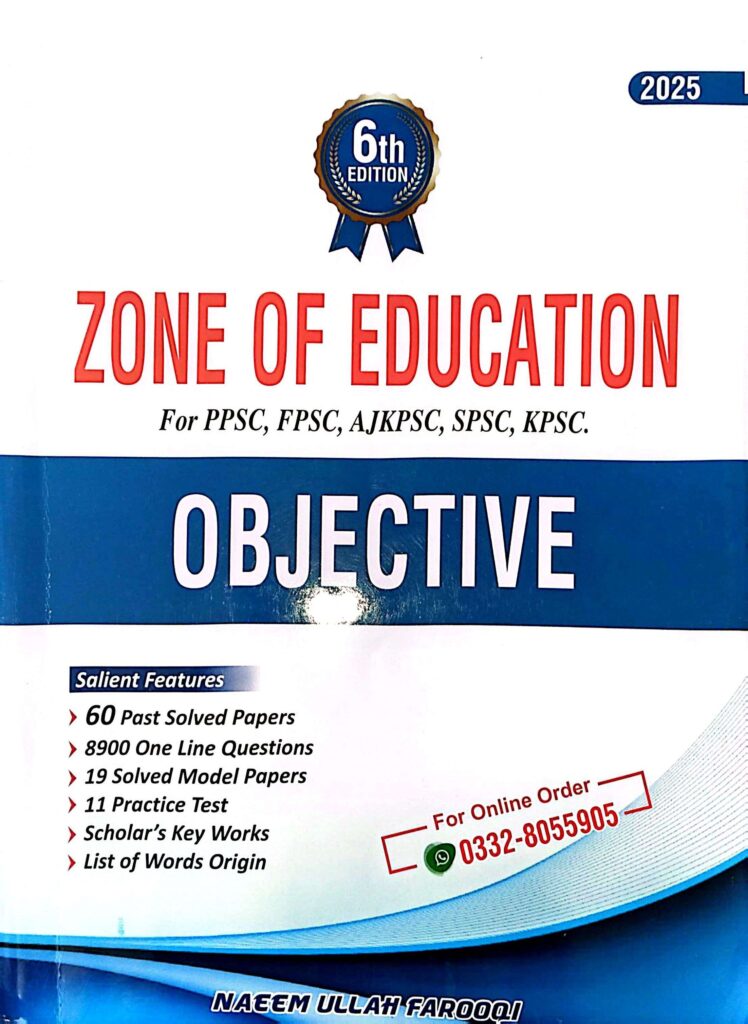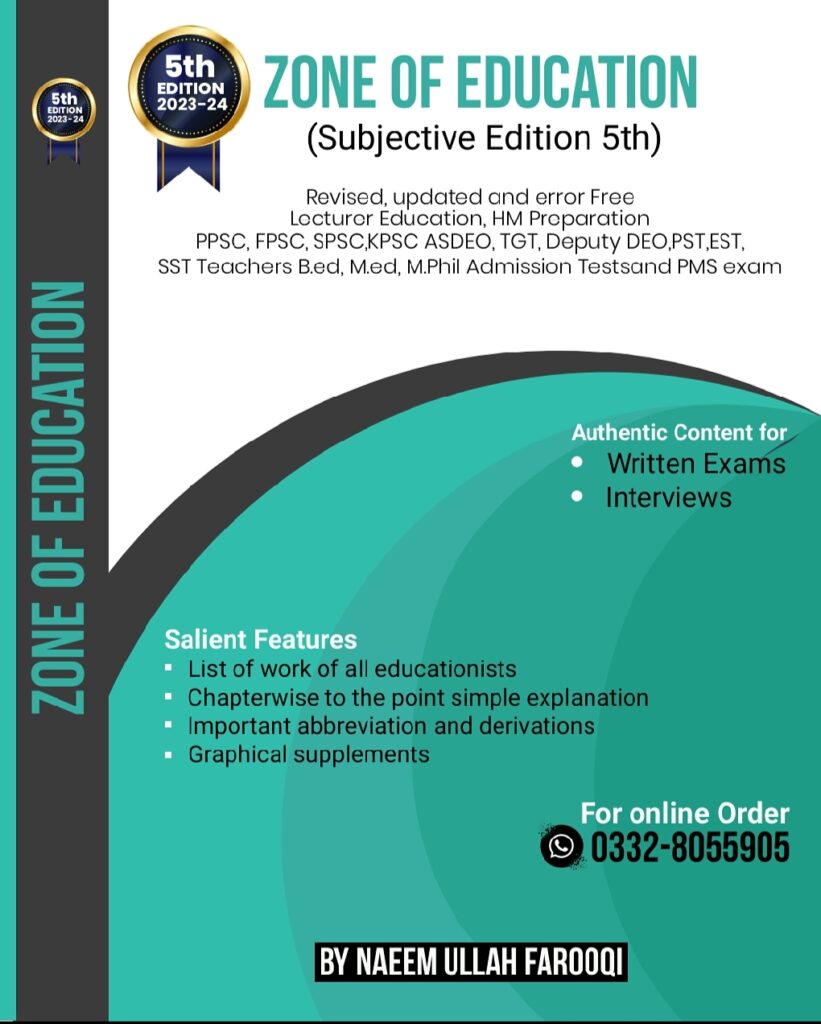GENERAL METHODS OF TEACHING
31. The technique in which students act out roles from stories or historical events is termed as:
A. Drama
B. Play
C. Simulation
D. All of the above
Ans: (D) All of the above
32. When the teacher wants students to practice by repetition of some learning content, he normally uses the _______ method.
A. Skill
B. Drill
C. Recitation
D. None of the above
Ans: (B) Drill
33. When a learner is learning to satisfy his needs and wants, he is actually doing:
A. Sensory learning
B. Behavioural learning
C. Cognitive learning
D. Experiential learning
Ans: (D) Experiential learning
34. When a learner is studying simply because work is assigned by the teacher, he is doing:
A. Cognitive memorizing
B. Experiential learning
C. Sensory learning
D. None of the above
Ans: (A) Cognitive memorizing
35. When educators travel to the student’s location to provide instruction on topics of professional or personal interest, the mode of teaching becomes:
A. Travel Teaching
B. Innovative Teaching
C. Moving Teaching
D. Extension Teaching
Ans: (D) Extension Teaching
36. _______ is an approach whereby a teacher or counsellor poses questions to the student to allow them to explore ideas that may be complex or emotionally difficult.
A. Facilitative questioning
B. Critical questioning
C. Explanatory questioning
D. None of the above
Ans: (A) Facilitative questioning
37. During facilitative questioning, the teacher poses:
A. Close-ended questions
B. Open-ended questions
C. Oral questions
D. Written questions
Ans: (B) Open-ended questions
38. When students are asked to leave the classroom to observe events, organisms, and objects in their natural surroundings, the teacher is actually using the _______ strategy to teach them.
A. Field Observations
B. Class observation
C. Field trips
D. None of the above
Ans: (A) Field Observations
39. A _______ is any activity that occurs outside the classroom for the purpose of providing hands-on experience with objects or people that only occur in certain places.
A. Field observations
B. Field Trips
C. Field work
D. Field walk
Ans: (B) Field Trips
40. A _______ is an organizing tool to help students visualize how many events can be tied to or contribute to a result.
A. Fishpond
B. Backbone
C. Fishbone
D. None of the above
Ans: (C) Fishbone
41. Traditionally, the cards with a question, problem, or fact on one side, and the answer or a related fact on the other side, are called:
A. Placards
B. Note cards
C. Observation Cards
D. Flash Cards
Ans: (D) Flash Cards
Explanation: In today’s ECE classrooms, flashcards are mostly used to pass information rather than for questioning. For example, they contain letters, the formation of letters, and nouns starting with them.
42. Free writing is used as a timed activity to stimulate the flow of:
A. Discussions
B. Talk
C. Ideas and words
D. Letters of the alphabet
Ans: (C) Ideas and words
43. When the teacher is restating the information to show basic principles in the classroom, he is actually:
A. Criticizing
B. Pinpointing
C. Making diagrams
D. Generalizing
Ans: (D) Generalizing
44. _______ are visual frameworks to help the learner make connections between concepts.
A. Graphic representations
B. Graphic charts
C. Graphic organizers
D. None of the above
Ans: (C) Graphic organizers
45. Any method of teaching which involves two or more students can be termed as:
A. Group task
B. Class work
C. Class task
D. Group Work
Ans: (D) Group Work
46. An interesting classroom activity in which an object is hidden in a container and students ask questions about the content of the box in order to identify it and its characteristics is called:
A. Clue Box
B. Big Box
C. Small Box
D. Guess Box
Ans: (D) Guess Box
47. The teaching model in which students learn through explorations, but with directions from the teacher, is called:
A. Guided Discovery
B. Guided Practice
C. Guided Learning
D. None of the above
Ans: (A) Guided Discovery
48. Guided Practice is a form of:
A. Affection
B. Learning
C. Scaffolding
D. None of the above
Ans: (C) Scaffolding
49. Structured reading where short passages are read, then student interpretations are immediately recorded, discussed, and revised is called:
A. Guided Reading
B. Guided Practice
C. Guided Learning
D. None of the above
Ans: (A) Guided Reading
50. _______ means any instructional activity that emphasizes students working with objects relevant to the content being studied.
A. Physical activity
B. Classroom activity
C. Hands-On activity
D. None of the above
Ans: (C) Hands-On activity
51. _______ is a method when students ask questions to each other during presentations.
A. Peer Tutoring
B. Peer Classification
C. Oral Questioning
D. Peer Questioning
Ans: (D) Peer Questioning
52. When instruction is delivered by a person close in age or achievement to the person receiving instruction, the process is known as:
A. Peer Coaching
B. Individual Tutoring
C. Peer Tutoring
D. None of the above
Ans: (C) Peer Tutoring
53. _______ is a pair activity in which students have exactly 30 seconds to share all they know.
A. Quick talk
B. Quick response
C. Quick discussion
D. Quick intro
Ans: (A) Quick talk
54. _______ is a pair activity in which students have a short period (typically 30 seconds) to share all they know by writing in a graphic organizer.
A. Quick write
B. Quick discussion
C. Quick response
D. Quick order
Ans: (A) Quick write
55. Raps are:
A. Songs written and presented by students
B. Songs written and presented by teachers
C. Songs written by the teacher and presented by the students
D. None of the above
Ans: (A) Songs written and presented by students
56. An old but effective teaching strategy is:
A. Reading
B. Silent Reading
C. Read Aloud
D. All of the above
Ans: (C) Read Aloud
57. Teacher reads aloud to the class to improve students’:
A. Comprehension
B. Pronunciation
C. Feelings about reading
D. All of the above
Ans: (D) All of the above
58. Team activity to summarize reading is also termed as:
A. Group Summary
B. Group Presentation
C. Relay Summary
D. None of the above
Ans: (C) Relay Summary
59. Round-Table Discussion involves:
A. 2-3 participants
B. 2-8 participants
C. 4-5 participants
D. 3-7 participants
Ans: (C) 4-5 participants
60. In a round-table discussion, the participants discuss the topic among themselves and with the audience:
A. Formally
B. Informally
C. Originally
D. None of the above
Ans: (B) Informally
JOIN ZONE OF EDUCATIONPK!
Discover the most comprehensive and reliable pedagogy resources in Pakistan, curated for competitive exam success. Our content covers all competitive exam MCQs, including PPSC, FPSC, AJKPSC, SPSC, and more. Designed to empower learners with top-notch material and insights, trust us for your preparation journey!


